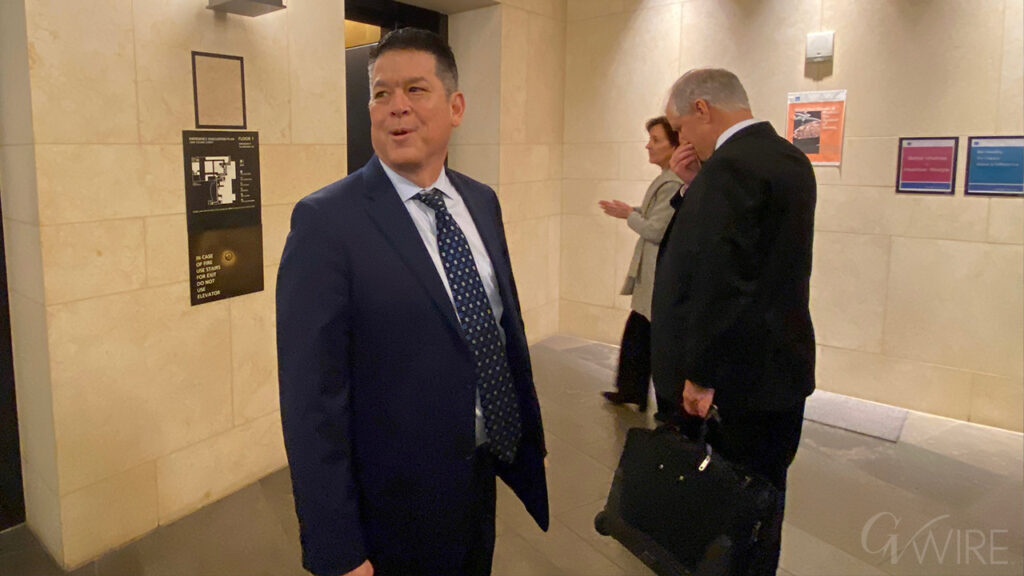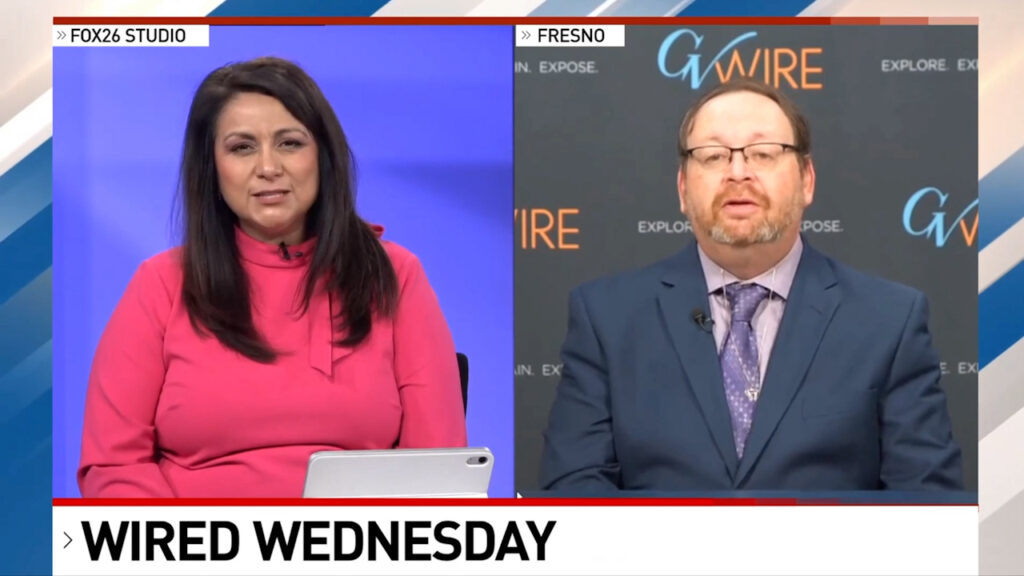Share
SAN FRANCISCO — Before the pandemic, Señor Sisig food trucks were a common sight in downtown San Francisco, dishing out Filipino fusion tacos and burritos to long lines of workers who spilled out of office towers at lunch.
The trucks now are gone, forced into the suburbs because there’s practically no one around to feed in the city’s center.
As the coronavirus pandemic transforms San Francisco’s workplace, legions of tech workers have left, able to work remotely from anywhere. Families have fled for roomy suburban homes with backyards. The exodus has pushed rents in the prohibitively expensive city to their lowest in years. Tourists are scarce, and the famed cable cars sit idle.
The food trucks, like many other businesses, are wondering when things will bounce back.
“Is it ever going to get back to normal, is it ever going to be as busy as it was — and will that be next year, or in 10 years?” said Evan Kidera, CEO of Señor Sisig.
On Tuesday, more of San Francisco reopened for business after Mayor London Breed proudly declared last week that the city’s low virus case numbers allowed it to move into California’s most permissive reopening tier. That means more people can go back to the office, eat indoors at restaurants, visit museums and soon even enjoy a beer or cocktail — outdoors — at a bona fide drinks-only bar.
It is the only urban county in the state to hit this tier, joining a handful of sparsely populated rural ones.
In March, counties in the Bay Area jointly ordered their residents to stay at home, becoming the first region in the country to do so. And San Francisco itself was even slower than its neighbors to reopen restaurants, gyms and salons.
The result: San Francisco, which pre-pandemic had nearly 900,000 residents, has recorded just over 12,200 virus cases and 145 deaths, among the lowest death rates in the country. By contrast, the Southern California city of Long Beach is about half the size but has had about 900 more cases and 100 more deaths.
There Are No Hard Figures on How Many Residents Have Left
But the restrictions also played a role in shutting down critical elements of San Francisco’s vibrant economy — tourism, tech and the city’s main business and financial districts, packed with high-rise condos, office towers and headquarters for the likes of Twitter, Pinterest and Slack.
There are no hard figures on how many residents have left. It remains to be seen if the limited reopening will do much to repopulate the city.
“San Francisco can say, ‘Hey, it’s cool to open back up.’ But what’s changed?” tech executive Connor Fee said. “The virus is still there, and there’s no vaccine.”
Last week Fee, 38, and his partner moved out of their $4,000-a-month one-bedroom apartment. “We’re both extreme extroverts, so the working from home thing makes us miserable,” he said.
Figuring they could work their jobs remotely from anywhere, they bought a car, packed up the essentials — 24-inch monitors, chef’s knives, bikes and some clothes — and drove south to an Airbnb in San Diego. The plan is a string of trips and temporary stays across the country.
“When we left, we didn’t say goodbyes. We’re not planning to move forever,” Fee said. But their calendar is booked for several months at least.
Others left permanently for nearby suburbs, in search of more living space for less money.
“The spark of living in the city just kind of burned out a bit with everything being closed,” said Deme Peterson, 30, who moved across the bay to her hometown of Walnut Creek with her husband a few weeks ago. “We kind of didn’t see when it would come back to normal.”

San Francisco’s Office Vacancy Rate Has Since Nearly Tripled Compared With December
The restaurant industry projects half the eateries in a city consumed with innovative dining may not survive the pandemic. Some already have closed. There will be no more eggs benedict, for example, served with a view at Louis’ Restaurant, which has had a prime perch on a cliff overlooking the Pacific Ocean since 1937.
Companies in the nation’s tech capital, where Google, Facebook and Salesforce, the city’s largest employer, have extensive office space, were quick to embrace remote working and when the lockdown came, an estimated 137,500 tech workers seemingly vanished overnight.
San Francisco’s office vacancy rate has since nearly tripled compared with December to 14.1%, the highest since 2011, said Robert Sammons, a senior researcher with commercial real estate group Cushman & Wakefield who is eager to return to his own downtown office.
For Rent and For Sale signs began popping up this summer with increasing frequency — and offering steeply reduced prices. Residential rents that were among the highest in the country have plummeted, with the median price for a one-bedroom apartment dropping 20% to $2,800, according to rental listing platform Zumper. Moving trucks are a common sight on weekends.
Another telling indicator that people weren’t around? While other California cities showed big increases in online sales tax collections as more people ordered from home during the pandemic, that was virtually flat in San Francisco, according to a city report issued earlier this month.
“I don’t know if it’s an exodus, but a lot of people are leaving,” said city historian and author Gary Kamiya, who says the streets of his North Beach-Telegraph Hill neighborhood are full of furniture free for the taking.
But There Have Been Many Downsides
Based on the quality and taste of the tables, chairs and works of art he’s seen, including the pair of end tables he grabbed for his daughter, Kamiya figures they were put out by young, “pretty highly paid people.”
Some of the change has been positive. Many of San Francisco’s eclectic neighborhoods are bouncing back, buoyed by pedestrian streets newly closed to vehicles and now filled with outdoor dining and kids on bikes.
But there have been many downsides, including rising break-ins and other types of crime, a worsening homelessness crisis and a spike in open drug use.
In the central Hayes Valley neighborhood, the streets have become so filthy that Kim Alter decided against seating people outdoors at her restaurant, Nightbird.
“I would love to do outdoor seating, but I’d have to worry about needles and feces,” said Alter, the restaurant’s chef and owner, who now regularly power-washes sidewalks outside to remove the stench.
Within a four-block radius, more than two dozen establishments have closed as business dries up and customers disappear, she said: “A lot of our regulars have already moved; they come to us and have their final meal — as takeout.”
For hair stylist Caitlin Boehm, 36, who grew up in San Francisco, the extended closure was the final straw. She’s moving next month to Austin, Texas, seeking a mix of warm weather, an artistic vibe similar to what San Francisco has long been known for and affordability undreamed of in her hometown.
At her new one-bedroom she’ll have a pool, gym, in-unit laundry and dishwasher, all for about $1,600 a month, none of which she had in her $2,700 rental back home.
The Central Financial and Retail Districts Have a Long Way to Go to Recapture Their Pre-Pandemic Bustle
“I may even be able to buy a house or open my own salon,” Boehm said. “I never allowed myself to even think that big when I was in San Francisco.”
With so many people working remotely, the central financial and retail districts have a long way to go to recapture their pre-pandemic bustle. Nearly 100,000 people riding packed commuter trains used to get off at downtown’s two busiest stops each weekday, most them from the suburbs. Now, Bay Area Rapid Transit ridership is down nearly 90%.
For Debi Gould, 67, who lives in the Rincon Hill neighborhood near the Bay Bridge, the moving trucks, vacant units and departing neighbors have become common.
But the retiree relishes having ample street parking where once there was none and walking her dog along formerly traffic-clogged streets turned calm. She does not miss the throngs of people crowding sidewalks, walking while staring at their smartphones.
“I don’t have to part the Red Sea through pedestrians walking toward me, who would see me and not move,” she said.
That may change somewhat with nonessential offices now allowed to bring a quarter of their workers back. Or at least that’s the hope of Leslie Silverglide, CEO and co-founder of Mixt, a popular chain of salad eateries.
She has managed to keep a few outlets open and acquired some new regulars — construction workers — but the shutdown has been hard, and at first she even found walking alone downtown to be scary at times.

“History will tell us, right?” Silverglide said of the city’s pandemic response. “I’ve felt like in some ways San Francisco has been more extreme than anywhere else in the country. But then you look at what’s happening across the country … case counts going up in so many states and things just spiraling out of control.”
Breed, other city officials and business leaders are adamant that the sacrifices are worth it, and public health director Dr. Grant Colfax said that attitude has been critical to its success, along with top-notch medical facilities, robust testing and memories of the devastation wrought in San Francisco by the AIDS epidemic in the 1980s.
“In those days of HIV, there were all sort of issues and unknowns but in general the community came together,” Colfax said. “I think we’re seeing a similar response here.”
Until the pandemic hit, the city’s housing market was so tight that would-be renters lined up for viewings and arrived with thousands of dollars in cash, ready to sign a lease on the spot.
But now landlords are hard-up for tenants and some are offering several months free, said Coldwell Banker realtor Nick Chen, who recently rented out a one-bedroom for $3,150 that before would have easily gone for $4,300.
“San Francisco rents have been really inflated over the past couple years,” Chen said. “It will come back, but I think the question is: Will it come back to the level it was at previously? Maybe not.”
RELATED TOPICS:
Categories

Target App Down for Thousands, Downdetector Shows

Fresno County Crash Leads to Fire Rescue on Millerton Road

Visalia Police Seize 28 Pounds of Meth, Firearms in Search

Visalia Police to Conduct DUI Checkpoint Friday















